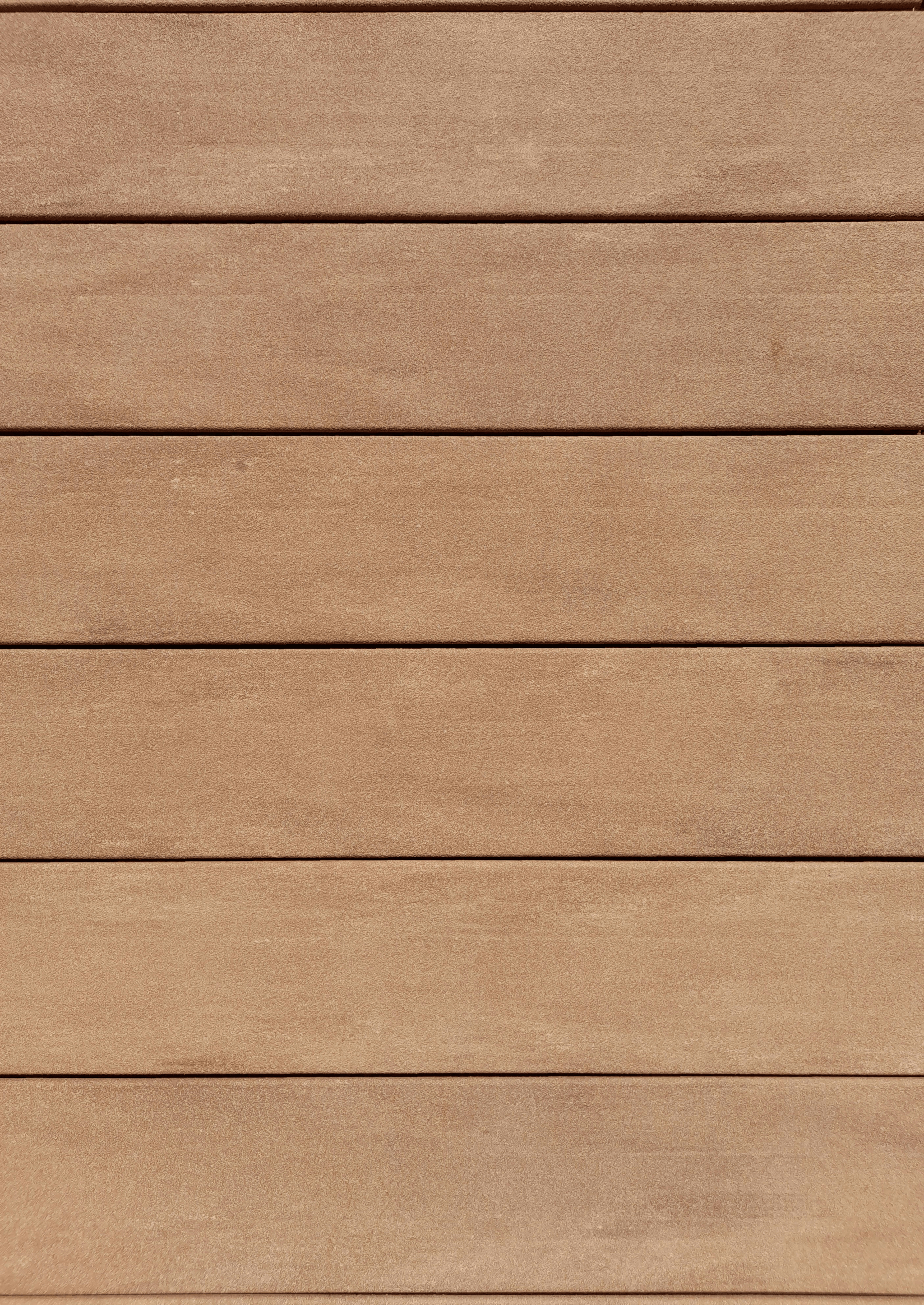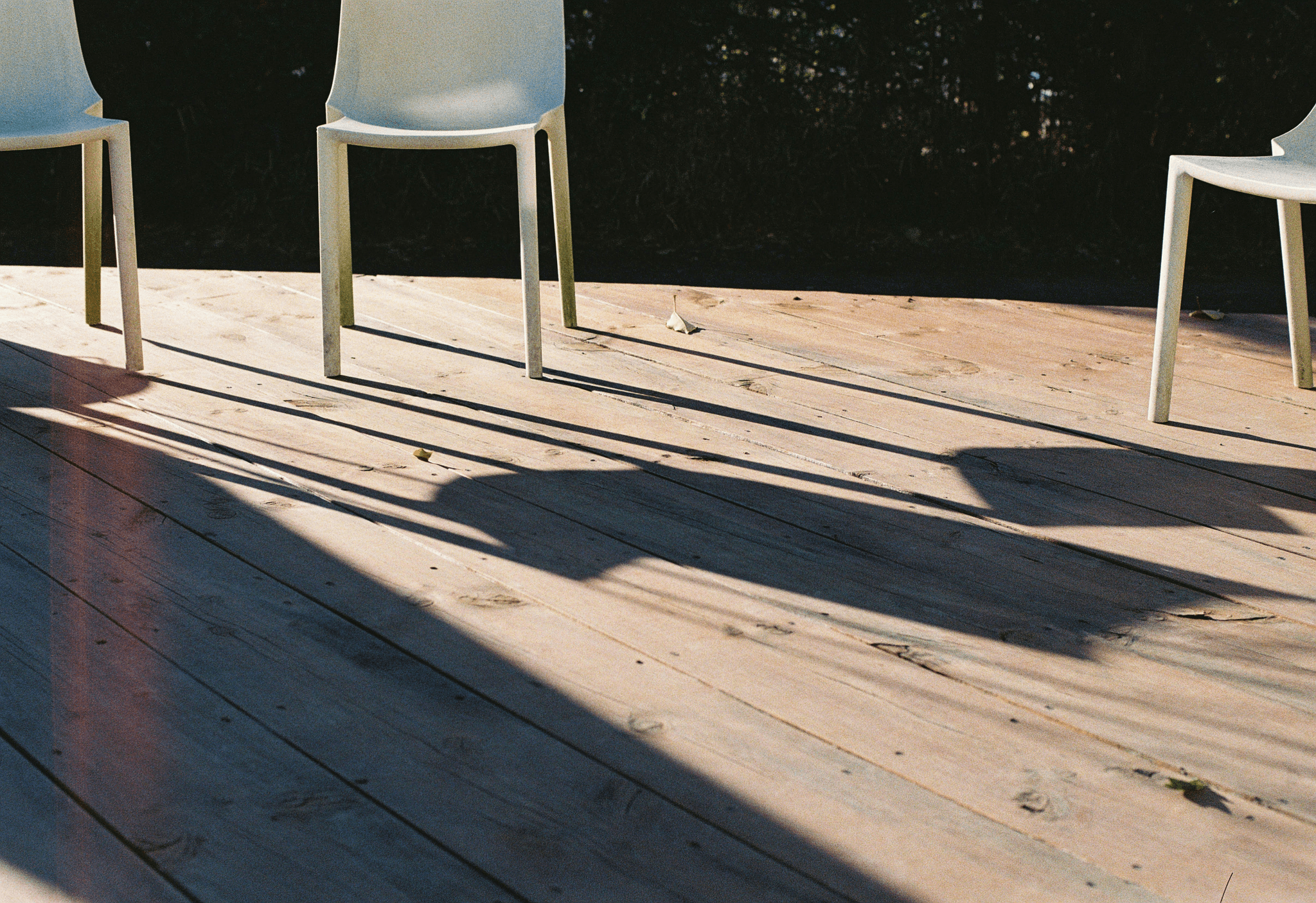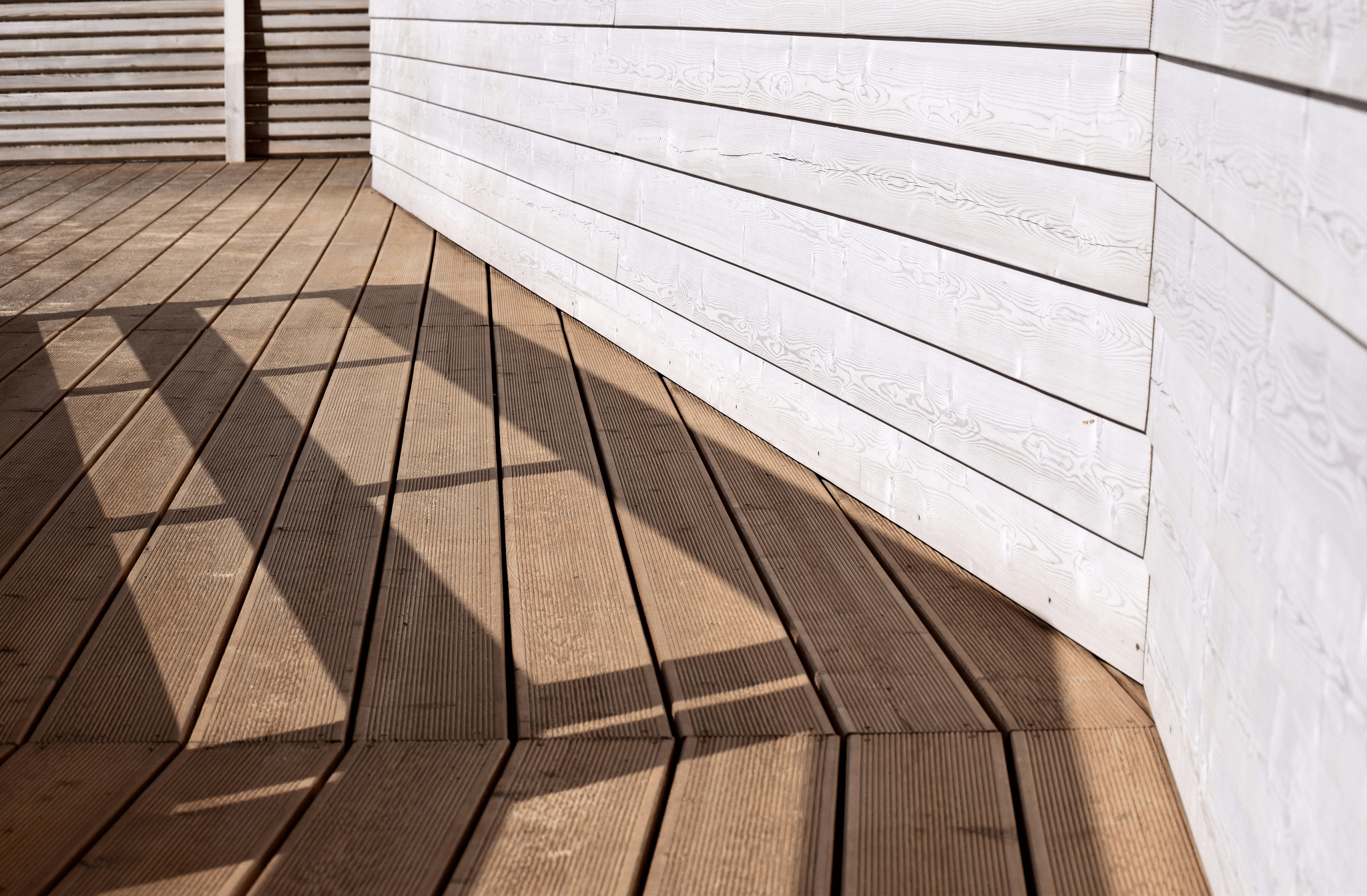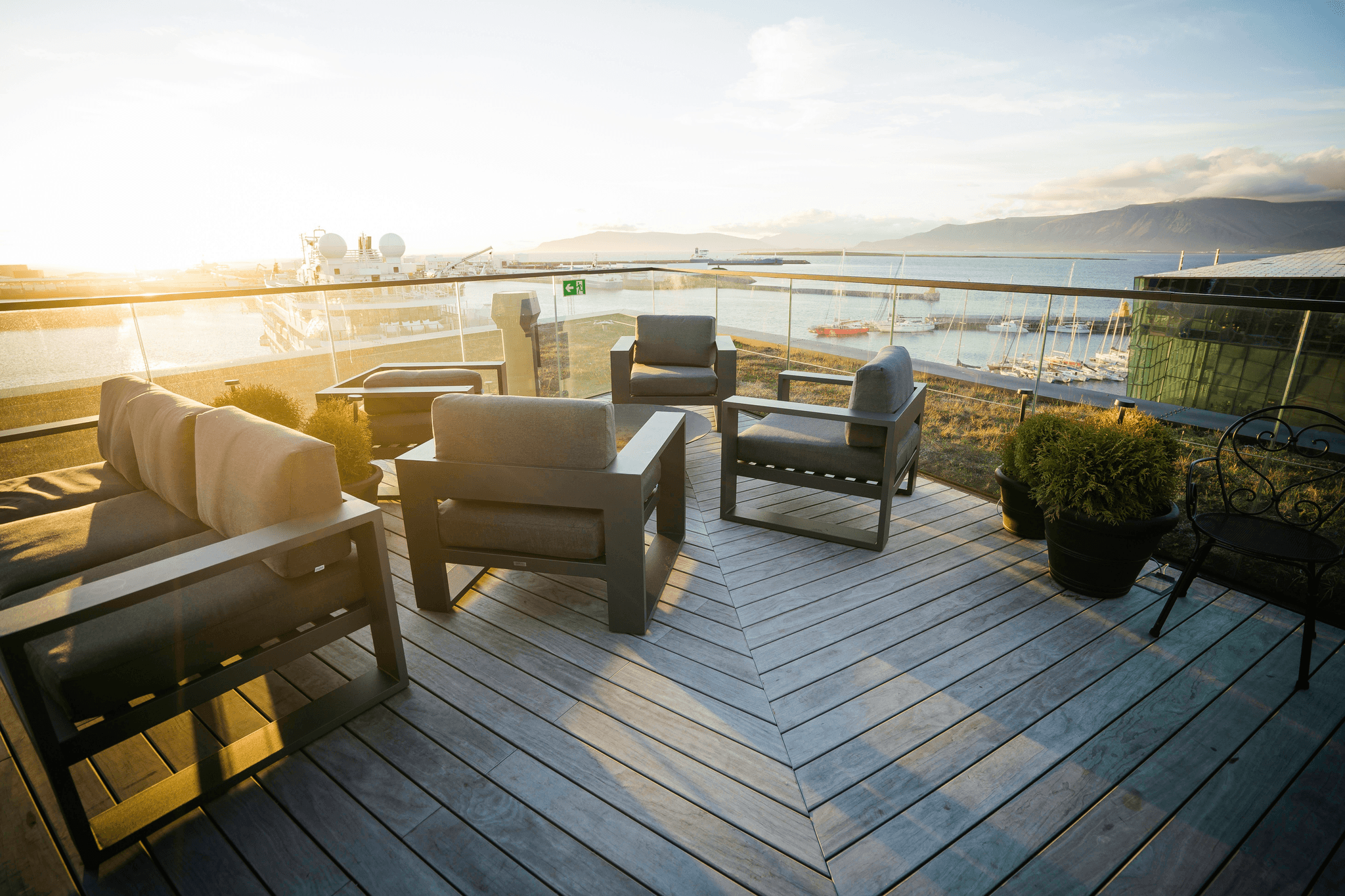Introduction

In the world of outdoor living, non wood decking options have surged in popularity, providing homeowners with a plethora of choices beyond traditional timber. With advancements in technology and materials, composite lumber decking has emerged as a go-to solution for those seeking durability and aesthetics without the hassle of maintenance associated with real wood. From synthetic lumber for decks to innovative decking systems, the landscape of outdoor flooring is evolving rapidly.
Understanding Non Wood Decking Options
Non wood decking encompasses a range of materials designed to mimic the appearance of traditional wood while offering superior performance characteristics. These alternatives include composite wood made from recycled plastics and wood fibers, which not only look great but also stand up to the elements. Understanding these options is crucial for homeowners looking to enhance their outdoor spaces without compromising on quality or style.
Benefits of Non Wood Decking Materials
The benefits of non wood decking materials are numerous, appealing to both eco-conscious consumers and those seeking low-maintenance solutions. Composite lumber decking is known for its longevity and resistance to fading, splintering, and warping—issues often associated with natural wood. Additionally, many products are made from recycled content, making them an environmentally friendly choice that reduces waste while beautifying your home.
Popular Choices in Composite Decking
From sleek modern finishes to rustic looks that evoke traditional charm, fake decking boards offer versatility without sacrificing durability or ease of care. Some leading brands have revolutionized the market with their innovative products that promise exceptional performance and aesthetic appeal in any outdoor setting.
What is Non Wood Decking?

Non wood decking is revolutionizing outdoor spaces, offering an alternative to traditional wood materials that combines aesthetics with performance. This innovative approach to decking utilizes a variety of materials that mimic the look of wood while enhancing durability and reducing maintenance. As homeowners increasingly seek sustainable and long-lasting options, non wood decking has emerged as a popular choice for modern decks.
Definition and Overview
At its core, non wood decking refers to any decking material that does not originate from trees; instead, it typically consists of composite lumber or synthetic lumber for decks made from recycled plastics, wood fibers, or other materials. These products are engineered to provide the beauty of traditional timber without the drawbacks associated with natural wood, such as warping and rot. The rise of composite decking has opened up new possibilities for outdoor design, making it easier than ever to create stunning spaces that withstand the test of time.
How It Differs from Traditional Wood
One significant difference between non wood decking and traditional wood lies in their composition and performance characteristics. While real wood can be susceptible to issues like splintering, fading, and insect damage, composite lumber decking offers enhanced durability and resistance against these common problems. Additionally, non wood options often require less maintenance than their wooden counterparts—no more sanding or staining every year! This makes fake decking boards an attractive solution for those who want beautiful outdoor spaces without the hassle.
Common Materials Used
When considering non wood decking options, several common materials come into play that define this category's versatility and appeal. Composite materials often include a blend of recycled plastics and reclaimed wood fibers—creating a product that's both eco-friendly and aesthetically pleasing. Other synthetic lumber for decks may incorporate PVC or polyethylene components designed specifically for longevity in various weather conditions while maintaining visual appeal throughout their lifespan. Each material offers unique benefits tailored to different preferences in style and functionality within diverse decking systems.
Benefits of Composite Lumber Decking

When considering non wood decking options, composite lumber decking stands out for its remarkable advantages. This innovative material combines durability with aesthetic appeal, making it a popular choice for homeowners looking to enhance their outdoor spaces. Let's dive into the key benefits that make composite decking an attractive alternative to traditional wood.
Longevity and Durability
One of the standout features of composite lumber decking is its impressive longevity and durability. Unlike traditional wood, which can warp, splinter, or succumb to rot over time, synthetic lumber for decks is engineered to withstand the elements without losing its charm. With a lifespan that often exceeds 25 years, this decking material offers peace of mind for those who want their outdoor investments to last.
Moreover, composite decking is resistant to fading and staining, meaning your deck will retain its vibrant look season after season. The advanced technology used in creating fake decking boards ensures that they can handle heavy foot traffic without showing signs of wear and tear. So when you choose composite wood for your deck, you're not just selecting a surface; you're investing in a long-lasting outdoor experience.
Low Maintenance Requirements
Another compelling reason to opt for non wood decking solutions like composite lumber is the low maintenance requirements associated with these materials. Unlike traditional wooden decks that demand regular staining and sealing to maintain their appearance and integrity, synthetic lumber requires minimal upkeep—just an occasional wash with soap and water will do the trick!
This ease of maintenance means more time enjoying your deck rather than laboring over it. Homeowners can spend their weekends lounging or hosting barbecues instead of sanding or repainting their surfaces. Ultimately, choosing composite decking systems translates into significant savings in both time and effort.
Eco-Friendly Manufacturing
In today’s environmentally conscious world, eco-friendly manufacturing practices are more important than ever—and this is where non wood decking truly shines! Many brands producing composite lumber use recycled materials as part of their composition, significantly reducing waste compared to traditional timber production methods. By opting for synthetic lumber for decks made from recycled plastics and wood fibers, you’re not just enhancing your home; you’re also contributing positively to the planet.
Moreover, because these materials are designed to last longer than natural wood alternatives, they help reduce the need for frequent replacements—further minimizing environmental impact over time. Choosing fake decking boards isn't just a smart choice for your home; it's also a responsible decision that supports sustainable practices in construction and landscaping industries alike.
Exploring Synthetic Lumber for Decks

Characteristics of Synthetic Materials
Synthetic materials used in composite lumber decking are engineered to withstand the elements and resist wear and tear. They often consist of a blend of recycled plastics and wood fibers, giving them durability while reducing environmental impact. Additionally, these materials are resistant to fading, staining, and mold growth, making them ideal for various decking systems.
The texture and appearance of synthetic lumber can closely resemble that of real wood without the drawbacks associated with traditional options. This means you can enjoy the aesthetics you love without worrying about splintering or warping over time. Plus, many brands offer a variety of colors and finishes to suit any design preference.
Comparison with Real Wood
When comparing synthetic lumber for decks to real wood, one must consider both performance and maintenance requirements. While natural wood offers undeniable charm, it demands regular upkeep—think sanding, staining, and sealing—to maintain its integrity over time. In contrast, non wood decking requires minimal maintenance; a simple wash with soap and water will keep it looking fresh.
Moreover, synthetic materials are less prone to issues like termites or rot that can plague traditional wooden decks. This longevity makes composite lumber decking a more cost-effective solution in the long run since you won't be replacing boards every few years due to damage or decay. Ultimately, if you're seeking durability coupled with aesthetic appeal, fake decking boards may just be your best bet.
Key Brands and Products
Several key players dominate the market for composite decking solutions today, each offering unique products that cater to different needs and preferences in non wood decking options. Brands like Trex and TimberTech lead the way with innovative designs that prioritize sustainability alongside style; their composite wood products often incorporate recycled materials into their manufacturing processes.
Another noteworthy contender is Fiberon which boasts an extensive range of colors and textures in its composite lumber offerings—all designed to mimic natural hardwoods beautifully while ensuring long-lasting performance under various weather conditions. Additionally, AZEK provides premium synthetic options that combine aesthetics with superior durability through advanced technology.
Choosing from these reputable brands ensures you’re investing in quality decking material that meets both functional requirements and design aspirations—making your outdoor space not just usable but truly enjoyable!
Evaluating Decking Systems

Different Types of Non Wood Decking Systems
There are several types of non wood decking systems available on the market today, each designed to cater to various preferences and budgets. Composite lumber decking is a popular choice due to its blend of recycled materials and wood fibers, providing an aesthetically pleasing yet durable solution. Additionally, synthetic lumber for decks often mimics the appearance of real wood while offering enhanced resistance against weathering and pests.
Another option includes PVC (polyvinyl chloride) decking, which is entirely plastic-based and boasts impressive durability and low maintenance requirements. This type of fake decking boards often comes in various colors and textures, allowing homeowners to customize their outdoor spaces easily. Lastly, some manufacturers offer hybrid systems that combine both composite materials and traditional wood elements for those who appreciate a classic look with modern performance.
Installation Tips for Composite Decking
Installing composite decking can be a straightforward process if you follow some essential tips that ensure a successful project outcome. First off, always read the manufacturer's instructions thoroughly before starting; different brands may have specific guidelines regarding spacing and fastening methods for their composite wood products. Additionally, consider using hidden fasteners or clips designed specifically for composite lumber decking to achieve a clean finish without visible screws.
It's also important to account for expansion and contraction when laying down your non wood decking boards; leaving appropriate gaps between planks will help prevent warping over time due to temperature changes or moisture exposure. Finally, don't forget about proper substructure support—make sure your framing is level and sturdy enough to support your chosen decking system effectively.
Cost Analysis and Budgeting
Budgeting for your new outdoor space involves not only considering the cost of materials but also installation expenses associated with non wood decking systems. While initial investment in composite lumber can be higher than traditional wood options, keep in mind that these materials tend to last longer with less maintenance required over time—saving you money in the long run! When comparing costs between synthetic lumber for decks versus real wood alternatives, factor in potential repairs or replacements needed due to rot or insect damage with natural materials.
Additionally, it's wise to obtain quotes from multiple contractors if you're hiring professionals for installation; this will help you find competitive pricing while ensuring quality workmanship on your project. Lastly, don't overlook any additional costs such as permits or landscaping adjustments that may be necessary after installing your new deck—it's all part of creating an inviting outdoor oasis!
Highlighting Composite Decking Inc

Composite Decking Inc has emerged as a leader in the non wood decking market, providing innovative solutions for homeowners and builders alike. Their mission is to revolutionize outdoor spaces with high-quality composite lumber decking that combines aesthetics with durability. By focusing on environmentally friendly practices, they aim to make synthetic lumber for decks not just a choice, but the preferred option for modern outdoor living.
Company Overview and Mission
Founded on the principles of sustainability and innovation, Composite Decking Inc specializes in creating top-tier decking material that stands the test of time. Their commitment to producing eco-friendly products means that each board is crafted from recycled materials, reducing waste while offering exceptional quality. With a focus on customer satisfaction and community engagement, they strive to set new standards in the composite wood industry.
Signature Products and Innovations
Composite Decking Inc offers a diverse range of signature products designed to meet various aesthetic preferences and functional needs. From their ultra-durable fake decking boards to their stylishly textured surfaces that mimic real wood, there's something for everyone looking into non wood decking options. Innovations such as anti-slip technology and UV protection ensure their composite lumber decking remains beautiful and safe underfoot year-round.
Customer Testimonials and Success Stories
Customers rave about their experiences with Composite Decking Inc's products, often highlighting how their synthetic lumber for decks has transformed outdoor spaces into luxurious retreats. Many testimonials emphasize the ease of installation and low maintenance requirements compared to traditional wood options, making it an attractive choice for busy families or those who simply want more leisure time outdoors. Success stories abound from satisfied homeowners who have upgraded their properties using these innovative decking systems, showcasing how composite wood can enhance both beauty and functionality.
Conclusion

In wrapping up our exploration of non wood decking options, it's clear that the future is bright for composite lumber decking and synthetic materials. Homeowners are increasingly turning to these innovative solutions not just for their aesthetic appeal but also for their durability and low maintenance needs. With advancements in technology, the quality of fake decking boards continues to improve, making them a top choice for outdoor spaces.
The Future of Non Wood Decking
As we look ahead, the market for non wood decking is expected to expand significantly. Innovations in composite wood technology mean that synthetic lumber for decks will continue to evolve, offering even more choices in terms of color, texture, and performance. This trend reflects a growing awareness among consumers about sustainability and the long-term benefits of using eco-friendly decking materials.
How to Choose Your Decking Material
Choosing the right decking material can feel overwhelming with so many options available today. When considering composite decking systems, think about factors such as climate resilience, maintenance requirements, and your personal style preferences. Remember that investing in high-quality synthetic materials will pay off in the long run as they require less upkeep compared to traditional wood.
Transforming Your Outdoor Space with Composite Solutions
Transforming your outdoor space with composite solutions can elevate your home's aesthetic while providing a functional area for relaxation or entertainment. Whether you opt for sleek synthetic lumber or vibrant fake decking boards, you'll find that these materials offer versatility and style without sacrificing durability. By selecting non wood decking options like composite lumber decking, you’re not only enhancing your living space but also making an environmentally conscious choice.
